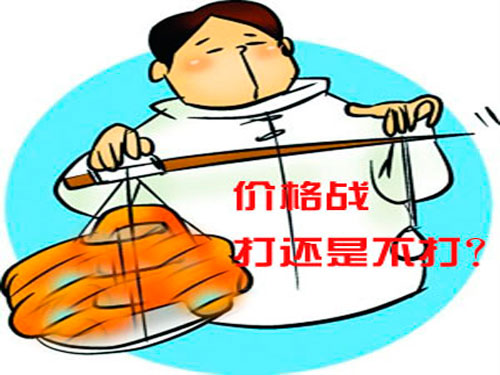 The price of books and a stone of war evoked thousands of waves. Recently, Jingdong Mall and Dangdang's book price war triggered netizens' hot discussion. Looking at the current industrial development situation, there is not only a price war in the book industry, but also a price war in the hardware industry. And the hardware industry price war has three major hazards.
The price of books and a stone of war evoked thousands of waves. Recently, Jingdong Mall and Dangdang's book price war triggered netizens' hot discussion. Looking at the current industrial development situation, there is not only a price war in the book industry, but also a price war in the hardware industry. And the hardware industry price war has three major hazards. Market competition is the competition of the enterprise's comprehensive strength and multiple factors. It is embodied in the market. It is the competition of product variety, quality, price and service, and it is a comprehensive application of various competition methods. However, the improvement of variety, quality, and service level requires the long-term efforts of enterprises, and competition through price reduction is the simplest and most effective method. With technological progress and cost reduction, price cuts are natural and an important means to further expand the market. However, price cuts are going to extremes as a vicious price war.
The price war is to increase its own burden and increase the cost of the enterprise. The price war is accompanied by a propaganda war. A large amount of advertising input from both parties has caused the operating cost of the company to rise substantially. This allows companies to reduce their revenues and profits. If one party lowers the price and the other does not lower the price, the price-reducing party can increase revenue and profits by expanding the market. However, many years of practice have proved that price cuts will inevitably lead to a chain reaction. Competitors will follow the price cuts in different forms. As a result, market share will not be able to expand. Although some potential markets are launched, it is difficult to make up for the income and profits caused by price cuts. loss. Cause confusion in business product and tariff management.
Violating customer interests and vicious price wars also harm the interests of customers. First, they hurt old customers. Most of the company's price cuts are aimed at expanding the market and striving for new customers. Its policy is also designed to attract new customers. Therefore, the benefits of price cuts are only enjoyed by new customers, while old customers are unable to enjoy price cuts, which damages the interests of old customers. It is difficult for customers to enjoy high quality services. As enterprises continue to cut prices, profits are reduced, and the ability to expand reproduction and improve services is reduced, the interests of customers will be harmed in the long run. The end result of a vicious price war is a loss of both sides, and it brings a lot of sequelae to all competing parties. The price war is generally a short-term one. It does not have long-term considerations and therefore often leads to difficult problems.
Affecting the overall benign development price war in the industry will result in a decline in corporate profits, and even result in the collapse of large numbers of enterprises and losses in the industry. As these were the first to provoke a price war, they disrupted the market order, seriously damaged the overall image of the industry development and economic environment, and led to a decline in the interests of the entire industry. Furthermore, in order to make up for the losses caused by the price reduction of products, companies can easily reduce costs by cutting corners and other means. This will inevitably lead to a decline in product quality and damage to the company's own credibility. The price war may not only not have the effect of seizing the market, but it will be counterproductive to the market.
For the current development of the hardware industry, companies can only enhance their R&D capabilities, promote the extension of the industrial chain to the top, climb the value chain to the high-end, and take the road of brand development to effectively enhance the market competitiveness.